-

Dec
16
Interpretive Summary: Tissue Dimensions Captive Bolt Swine
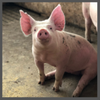
Penetrating captive bolt is a commonly used and humane method for euthanizing swine that weigh less than 200kg.
Read more
-

Dec
16
Interpretive Summary: Altered fecal microbiota, IgA, and fermentative end-products in adult dogs fed prebiotics and a nonviable Lactobacillus acidophilus

Higher demand for nutrition beyond the basic requirements of the animal has increased in the pet food industry; specifically, using pre-and probiotic ingredients to influence digestive health.
Read more
-

Dec
16
Interpretive Summary: Relationship between energy intake and growth performance and body composition in pigs selected for low backfat thickness
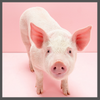
The progression of genetic selection for reduced carcass backfat has increased over the past 20 years, causing an altered phenotypic relationship between energy intake and carcass backfat thickness.
Read more
-

Dec
13
Interpretive Summary: Increased microbial phytase increased phytate destruction, plasma inositol, and feed efficiency of weanling pigs...
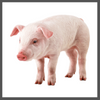
Due to stress during the post-weaning period, morbidity and mortality can be significantly increased. These stressors can be environmental, nutritional, physiological, and immunological changes.
Read more
-

Dec
13
Interpretive Summary: Live yeast and yeast extracts with and without pharmacological levels of zinc on nursery pig growth performance and antimicrobial susceptibilities of fecal Escherichia coli
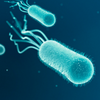
Feeding pharmacological levels of Zn in the early nursery phase has become a common practice in the swine industry to alleviate post-weaning diarrhea. However, antimicrobial resistance is a concern when feeding these levels.
Read more
-

Dec
13
Interpretive Summary: High inclusion rates of hybrid rye instead of corn in diets for growing-finishing pigs do not influence the overall growth performance and most carcass traits are not influenced by hybrid rye
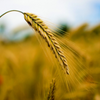
Hybrid rye has shown minimal impact on growth performance and carcass characteristics when used to replace barley and wheat. The current study's objective is to evaluate the use of hybrid rye as a replacement for corn in diets for growing and finishing pigs without impacting growth performance, carcass characteristics, or meat quality.
Read more
-

Dec
09
Interpretive Summary: Impacts of high amylopectin starch cassava on plasma glucose and the growth performance of pigs
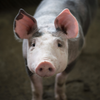
In this recent Journal of Animal Science study, researchers evaluated how cassava, a high amylopectin starch, impacted the performance and other metabolic parameters of growing pigs. Pigs were fed either a corn-soybean meal LP diet, a corn-cassava-soybean meal LP diet, or a cassava-soybean meal LP diet.
Read more
-

Dec
09
Interpretive Summary: Hydroxy-selenomethionine as an organic source of selenium in the diet improves boar reproductive performance in artificial insemination programs
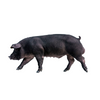
This was the first study of record to evaluate the effects of hydroxy-selenomethionine as a dietary supplement for boards on raw semen characteristics and quality of seminal doses, as well as the reproductive performance achieved when used for artificial insemination.
Read more
-

Dec
09
Interpretive Summary: Effect of aspirin to intentionally induce leaky gut on performance, inflammation, and carcass characteristics of feedlot cattle
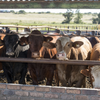
The negative impacts of stress on gastrointestinal tract barrier function can result in compromised animal growth and health; aspirin is known to cause mucosal injury, leading to increased gut permeability and tight junction damage and, in turn, can be used as a model to study leaky gut in cattle.
Read more
-

Dec
06
Interpretive Summary: Impacts of fiber and crude protein on performance and gut microbiota in piglets
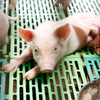
The prophylactic use of antibiotics and pharmacological zinc were traditionally used to ward off postweaning diarrhea (PWD) in piglets. However, due to antibiotic resistance and strict regulations on the use of zinc and antibiotics in animal feed, other strategies for combatting PWD are needed.
Read more
-

Dec
06
Interpretive Summary: Effects of increasing calcium propionate in a finishing diet on dry matter intake and glucose metabolism in steers
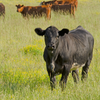
A study recently published in the Journal of Animal Science aimed to determine whether or not increasing propionate alters dry matter intake, glucose clearance rate, blood metabolites, insulin concentrations, and hepatic gene expression in steers fed a finishing diet.
Read more
-

Dec
06
Interpretive Summary: Impacts of lysed Corynebacterium glutamicum cell mass on the health and growth of nursery piglets
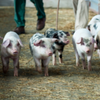
Single cell proteins (SCP) are nutrient dense and derived from various economical sources including bacteria and yeast. However, the safety profile of SCP and its and impact on production in farm animals are still under investigation.
Read more
-

Dec
02
Interpretive Summary: Genetic inbreeding depression load for fertility traits in Pura Raza Española mares

Over the last few decades, fertility has been studied as a breeding goal in domestic species, but horses have historically been selected for conformation or performance in equestrian sports without much regard to fertility. For this reason, there is little information available on fertility traits and their inclusion as selection criteria in equine breeding programs.
Read more
-

Dec
02
Interpretive Summary: Integrating diverse data sources to predict disease risk in dairy cattle—a machine learning approach

Livestock farming is currently undergoing a digital revolution. Animals and their surroundings are closely monitored and observed, but such data often reside in disconnected silos, making it impossible to leverage their full potential to improve animal well-being.
Read more
-

Dec
02
Interpretive Summary: Assessment of digestible lysine requirements in lipopolysaccharide-challenged pigs
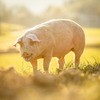
Changes in metabolism due to immune system activation and the incidence of infectious disease can lead to differing dietary amino acid requirements for an animal. In addition, it is imperative to determine the nutritional requirements of animals under challenging conditions, so feed formulations are optimal to maximize growth rate and efficient use of nutrients.
Read more
-

Nov
29
USDA to Reduce Salmonella Associated with Poultry

The United States Department of Agriculture’s (USDA) Food Safety and Inspection Service (FSIS) has announced new strategies to reduce Salmonella illness linked to poultry products. The efforts will include gathering data and information to support future actions to move closer to the Healthy People 2030 target of a 25% reduction in Salmonella illness.
Read more
-

Nov
29
Giving Tuesday opportunities - 2021

ASAS and the ASAS Foundation recognize members on Giving Tuesday.
Read more
-

Nov
29
School Food Recovery Act Reintroduced

The School Recovery Act was recently introduced to direct the United States Department of Agriculture (USDA) to provide competitive grants to support schools working on food waste reduction programs. “Reducing food waste in schools will give students the opportunity to develop responsible habits that can benefit their communities and our planet throughout their lives,” said Bonamici in a press release.
Read more
-

Nov
29
Review of Pandemic Food Box Expenditures Results Released

The government hired hundreds of private companies last spring to buy food no longer needed by restaurants, schools, and cruise ships, and transport it to overwhelmed food banks. The program faced several problems such as spilled and spoiled food, high costs, and uneven distribution nationwide.
Read more
-

Nov
29
NIFA to Invest Over $50 Million in New Farmers and Ranchers

“We recognize that beginning farmers and ranchers have unique needs for education, training, and technical assistance. Their success, especially in the first 10 years, often hinges on access to reliable, science-based information and the latest educational resources so they can improve their operations’ profitability and sustainability long-term.”
Read more
 DecInterpretive Summary: Tissue Dimensions Captive Bolt Swine
DecInterpretive Summary: Tissue Dimensions Captive Bolt Swine Penetrating captive bolt is a commonly used and humane method for euthanizing swine that weigh less than 200kg.
Penetrating captive bolt is a commonly used and humane method for euthanizing swine that weigh less than 200kg. DecInterpretive Summary: Altered fecal microbiota, IgA, and fermentative end-products in adult dogs fed prebiotics and a nonviable Lactobacillus acidophilus
DecInterpretive Summary: Altered fecal microbiota, IgA, and fermentative end-products in adult dogs fed prebiotics and a nonviable Lactobacillus acidophilus Higher demand for nutrition beyond the basic requirements of the animal has increased in the pet food industry; specifically, using pre-and probiotic ingredients to influence digestive health.
Higher demand for nutrition beyond the basic requirements of the animal has increased in the pet food industry; specifically, using pre-and probiotic ingredients to influence digestive health. DecInterpretive Summary: Relationship between energy intake and growth performance and body composition in pigs selected for low backfat thickness
DecInterpretive Summary: Relationship between energy intake and growth performance and body composition in pigs selected for low backfat thickness The progression of genetic selection for reduced carcass backfat has increased over the past 20 years, causing an altered phenotypic relationship between energy intake and carcass backfat thickness.
The progression of genetic selection for reduced carcass backfat has increased over the past 20 years, causing an altered phenotypic relationship between energy intake and carcass backfat thickness. DecInterpretive Summary: Increased microbial phytase increased phytate destruction, plasma inositol, and feed efficiency of weanling pigs...
DecInterpretive Summary: Increased microbial phytase increased phytate destruction, plasma inositol, and feed efficiency of weanling pigs... Due to stress during the post-weaning period, morbidity and mortality can be significantly increased. These stressors can be environmental, nutritional, physiological, and immunological changes.
Due to stress during the post-weaning period, morbidity and mortality can be significantly increased. These stressors can be environmental, nutritional, physiological, and immunological changes. DecInterpretive Summary: Live yeast and yeast extracts with and without pharmacological levels of zinc on nursery pig growth performance and antimicrobial susceptibilities of fecal Escherichia coli
DecInterpretive Summary: Live yeast and yeast extracts with and without pharmacological levels of zinc on nursery pig growth performance and antimicrobial susceptibilities of fecal Escherichia coli Feeding pharmacological levels of Zn in the early nursery phase has become a common practice in the swine industry to alleviate post-weaning diarrhea. However, antimicrobial resistance is a concern when feeding these levels.
Feeding pharmacological levels of Zn in the early nursery phase has become a common practice in the swine industry to alleviate post-weaning diarrhea. However, antimicrobial resistance is a concern when feeding these levels. DecInterpretive Summary: High inclusion rates of hybrid rye instead of corn in diets for growing-finishing pigs do not influence the overall growth performance and most carcass traits are not influenced by hybrid rye
DecInterpretive Summary: High inclusion rates of hybrid rye instead of corn in diets for growing-finishing pigs do not influence the overall growth performance and most carcass traits are not influenced by hybrid rye Hybrid rye has shown minimal impact on growth performance and carcass characteristics when used to replace barley and wheat. The current study's objective is to evaluate the use of hybrid rye as a replacement for corn in diets for growing and finishing pigs without impacting growth performance, carcass characteristics, or meat quality.
Hybrid rye has shown minimal impact on growth performance and carcass characteristics when used to replace barley and wheat. The current study's objective is to evaluate the use of hybrid rye as a replacement for corn in diets for growing and finishing pigs without impacting growth performance, carcass characteristics, or meat quality. DecInterpretive Summary: Impacts of high amylopectin starch cassava on plasma glucose and the growth performance of pigs
DecInterpretive Summary: Impacts of high amylopectin starch cassava on plasma glucose and the growth performance of pigs In this recent Journal of Animal Science study, researchers evaluated how cassava, a high amylopectin starch, impacted the performance and other metabolic parameters of growing pigs. Pigs were fed either a corn-soybean meal LP diet, a corn-cassava-soybean meal LP diet, or a cassava-soybean meal LP diet.
In this recent Journal of Animal Science study, researchers evaluated how cassava, a high amylopectin starch, impacted the performance and other metabolic parameters of growing pigs. Pigs were fed either a corn-soybean meal LP diet, a corn-cassava-soybean meal LP diet, or a cassava-soybean meal LP diet. DecInterpretive Summary: Hydroxy-selenomethionine as an organic source of selenium in the diet improves boar reproductive performance in artificial insemination programs
DecInterpretive Summary: Hydroxy-selenomethionine as an organic source of selenium in the diet improves boar reproductive performance in artificial insemination programs This was the first study of record to evaluate the effects of hydroxy-selenomethionine as a dietary supplement for boards on raw semen characteristics and quality of seminal doses, as well as the reproductive performance achieved when used for artificial insemination.
This was the first study of record to evaluate the effects of hydroxy-selenomethionine as a dietary supplement for boards on raw semen characteristics and quality of seminal doses, as well as the reproductive performance achieved when used for artificial insemination. DecInterpretive Summary: Effect of aspirin to intentionally induce leaky gut on performance, inflammation, and carcass characteristics of feedlot cattle
DecInterpretive Summary: Effect of aspirin to intentionally induce leaky gut on performance, inflammation, and carcass characteristics of feedlot cattle The negative impacts of stress on gastrointestinal tract barrier function can result in compromised animal growth and health; aspirin is known to cause mucosal injury, leading to increased gut permeability and tight junction damage and, in turn, can be used as a model to study leaky gut in cattle.
The negative impacts of stress on gastrointestinal tract barrier function can result in compromised animal growth and health; aspirin is known to cause mucosal injury, leading to increased gut permeability and tight junction damage and, in turn, can be used as a model to study leaky gut in cattle. DecInterpretive Summary: Impacts of fiber and crude protein on performance and gut microbiota in piglets
DecInterpretive Summary: Impacts of fiber and crude protein on performance and gut microbiota in piglets The prophylactic use of antibiotics and pharmacological zinc were traditionally used to ward off postweaning diarrhea (PWD) in piglets. However, due to antibiotic resistance and strict regulations on the use of zinc and antibiotics in animal feed, other strategies for combatting PWD are needed.
The prophylactic use of antibiotics and pharmacological zinc were traditionally used to ward off postweaning diarrhea (PWD) in piglets. However, due to antibiotic resistance and strict regulations on the use of zinc and antibiotics in animal feed, other strategies for combatting PWD are needed. DecInterpretive Summary: Effects of increasing calcium propionate in a finishing diet on dry matter intake and glucose metabolism in steers
DecInterpretive Summary: Effects of increasing calcium propionate in a finishing diet on dry matter intake and glucose metabolism in steers A study recently published in the Journal of Animal Science aimed to determine whether or not increasing propionate alters dry matter intake, glucose clearance rate, blood metabolites, insulin concentrations, and hepatic gene expression in steers fed a finishing diet.
A study recently published in the Journal of Animal Science aimed to determine whether or not increasing propionate alters dry matter intake, glucose clearance rate, blood metabolites, insulin concentrations, and hepatic gene expression in steers fed a finishing diet. DecInterpretive Summary: Impacts of lysed Corynebacterium glutamicum cell mass on the health and growth of nursery piglets
DecInterpretive Summary: Impacts of lysed Corynebacterium glutamicum cell mass on the health and growth of nursery piglets Single cell proteins (SCP) are nutrient dense and derived from various economical sources including bacteria and yeast. However, the safety profile of SCP and its and impact on production in farm animals are still under investigation.
Single cell proteins (SCP) are nutrient dense and derived from various economical sources including bacteria and yeast. However, the safety profile of SCP and its and impact on production in farm animals are still under investigation. DecInterpretive Summary: Genetic inbreeding depression load for fertility traits in Pura Raza Española mares
DecInterpretive Summary: Genetic inbreeding depression load for fertility traits in Pura Raza Española mares Over the last few decades, fertility has been studied as a breeding goal in domestic species, but horses have historically been selected for conformation or performance in equestrian sports without much regard to fertility. For this reason, there is little information available on fertility traits and their inclusion as selection criteria in equine breeding programs.
Over the last few decades, fertility has been studied as a breeding goal in domestic species, but horses have historically been selected for conformation or performance in equestrian sports without much regard to fertility. For this reason, there is little information available on fertility traits and their inclusion as selection criteria in equine breeding programs. DecInterpretive Summary: Integrating diverse data sources to predict disease risk in dairy cattle—a machine learning approach
DecInterpretive Summary: Integrating diverse data sources to predict disease risk in dairy cattle—a machine learning approach Livestock farming is currently undergoing a digital revolution. Animals and their surroundings are closely monitored and observed, but such data often reside in disconnected silos, making it impossible to leverage their full potential to improve animal well-being.
Livestock farming is currently undergoing a digital revolution. Animals and their surroundings are closely monitored and observed, but such data often reside in disconnected silos, making it impossible to leverage their full potential to improve animal well-being. DecInterpretive Summary: Assessment of digestible lysine requirements in lipopolysaccharide-challenged pigs
DecInterpretive Summary: Assessment of digestible lysine requirements in lipopolysaccharide-challenged pigs Changes in metabolism due to immune system activation and the incidence of infectious disease can lead to differing dietary amino acid requirements for an animal. In addition, it is imperative to determine the nutritional requirements of animals under challenging conditions, so feed formulations are optimal to maximize growth rate and efficient use of nutrients.
Changes in metabolism due to immune system activation and the incidence of infectious disease can lead to differing dietary amino acid requirements for an animal. In addition, it is imperative to determine the nutritional requirements of animals under challenging conditions, so feed formulations are optimal to maximize growth rate and efficient use of nutrients. NovUSDA to Reduce Salmonella Associated with Poultry
NovUSDA to Reduce Salmonella Associated with Poultry The United States Department of Agriculture’s (USDA) Food Safety and Inspection Service (FSIS) has announced new strategies to reduce Salmonella illness linked to poultry products. The efforts will include gathering data and information to support future actions to move closer to the Healthy People 2030 target of a 25% reduction in Salmonella illness.
The United States Department of Agriculture’s (USDA) Food Safety and Inspection Service (FSIS) has announced new strategies to reduce Salmonella illness linked to poultry products. The efforts will include gathering data and information to support future actions to move closer to the Healthy People 2030 target of a 25% reduction in Salmonella illness. NovGiving Tuesday opportunities - 2021
NovGiving Tuesday opportunities - 2021 ASAS and the ASAS Foundation recognize members on Giving Tuesday.
ASAS and the ASAS Foundation recognize members on Giving Tuesday. NovSchool Food Recovery Act Reintroduced
NovSchool Food Recovery Act Reintroduced The School Recovery Act was recently introduced to direct the United States Department of Agriculture (USDA) to provide competitive grants to support schools working on food waste reduction programs. “Reducing food waste in schools will give students the opportunity to develop responsible habits that can benefit their communities and our planet throughout their lives,” said Bonamici in a press release.
The School Recovery Act was recently introduced to direct the United States Department of Agriculture (USDA) to provide competitive grants to support schools working on food waste reduction programs. “Reducing food waste in schools will give students the opportunity to develop responsible habits that can benefit their communities and our planet throughout their lives,” said Bonamici in a press release. NovReview of Pandemic Food Box Expenditures Results Released
NovReview of Pandemic Food Box Expenditures Results Released The government hired hundreds of private companies last spring to buy food no longer needed by restaurants, schools, and cruise ships, and transport it to overwhelmed food banks. The program faced several problems such as spilled and spoiled food, high costs, and uneven distribution nationwide.
The government hired hundreds of private companies last spring to buy food no longer needed by restaurants, schools, and cruise ships, and transport it to overwhelmed food banks. The program faced several problems such as spilled and spoiled food, high costs, and uneven distribution nationwide. NovNIFA to Invest Over $50 Million in New Farmers and Ranchers
NovNIFA to Invest Over $50 Million in New Farmers and Ranchers “We recognize that beginning farmers and ranchers have unique needs for education, training, and technical assistance. Their success, especially in the first 10 years, often hinges on access to reliable, science-based information and the latest educational resources so they can improve their operations’ profitability and sustainability long-term.”
“We recognize that beginning farmers and ranchers have unique needs for education, training, and technical assistance. Their success, especially in the first 10 years, often hinges on access to reliable, science-based information and the latest educational resources so they can improve their operations’ profitability and sustainability long-term.”



